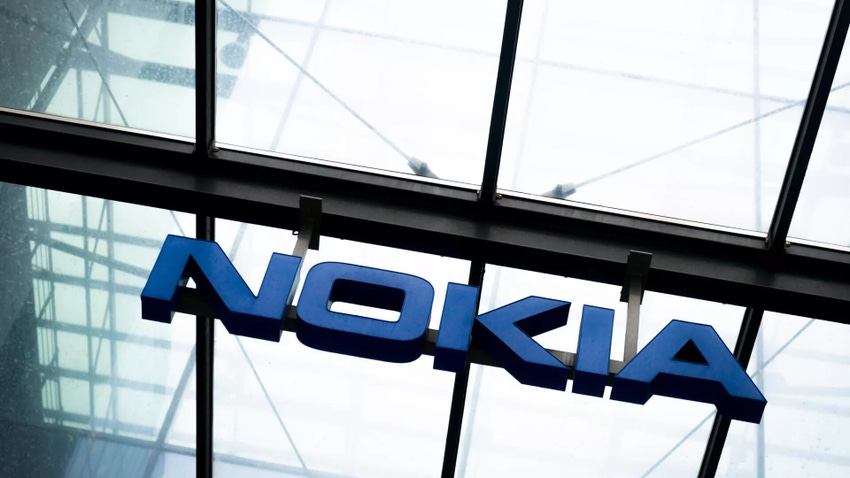Ericsson loses top chip exec to Nokia in shock transfer
Derek Urbaniak, who has led silicon engineering for Ericsson, is moving into a senior role at Nokia, according to sources.

At a senior level, staff moves between Ericsson and Nokia are even rarer than soccer-player transfers between Manchester City and Manchester United, fierce neighborhood rivals in the English Premier League. The Nordic firms are the local-derby competitors of the telecom equipment sector and as protective as any club of their talent.
But transfers do happen, and a potentially important one is afoot. Derek Urbaniak has been head of silicon engineering for Ericsson for the past six-and-a-half years, having previously worked in chip design roles for companies including AMD and Oracle. He served notice of his resignation from the Swedish kit maker in a recent LinkedIn post without saying what he would do next. But he is to join Nokia in a similar role, according to multiple sources with knowledge of the matter.
Sources told Light Reading that Urbaniak's decision had taken Ericsson by surprise given how unusual such moves are. It comes amid a technology industry debate about the role of accelerated computing versus general-purpose processors, and with chip technologies firmly in the telecom spotlight. To the outside world, Ericsson has taken a very different approach from Nokia. But the strategies of both companies have been in flux.
Urbaniak has been lined up to succeed Veijo Kontas, head of system-on-chip development for Nokia, who is due to retire later this year, Light Reading has learned. Kontas, who took up his current position in January 2019, is thought to have been instrumental in Nokia's 5G turnaround after it was let down by Intel on the delivery of 10-nanometer basestation chips and fell back on more power-hungry field programmable gate arrays (FPGAs). It subsequently introduced Broadcom and Marvell as 5G chip suppliers alongside Intel and has clawed back market share lost during its 5G troubles, according to third-party analyst reports.
Over in Sweden, Urbaniak will have led much of the work at Ericsson Silicon, the in-house chips unit, on application-specific integrated circuits (ASICs), semiconductors dedicated to a particular task. Ericsson's reputation for the energy efficiency of its 5G network products owes much to these ASICs, its executives have said. Losing the head of silicon engineering, then, looks bad. Losing him to the number-one competitor in most countries looks worse.
Chip changes
Does the move point to more spending on internal ASIC development by Nokia? While Ericsson has always claimed to produce its own baseband silicon, Nokia's public strategy is to meld its intellectual property with that of partners like Marvell, the Silicon Valley firm whose chips support the software hungriest for resources (so-called Layer 1) in Nokia's radio access network (RAN) products. Intel's chips run less demanding baseband software, while Broadcom is used in Nokia's radio units.
Yet Ericsson has an increasingly tight relationship with Intel. Besides identifying the US semiconductor giant as a maker of basestation chips for its purpose-built 5G networks, Ericsson is heavily reliant on Intel's Xeon-branded central processing units (CPUs) for its cloud RAN products. Nokia's preference is to keep the hungriest RAN software on the same Marvell chips that go into purpose-built equipment.
"General-purpose technology will eventually have so much investment in it that it will outpace custom silicon," said Sachin Katti, the general manager of Intel's network and edge group, during a previous interview with Light Reading. In late 2022, he suggested that Ericsson would do better to adopt general-purpose processors across its entire portfolio and concentrate resources on software development instead, saying "that is where they deliver the most differentiation."
But competitors question the "general purpose" claims. Intel's latest CPUs aimed at the RAN sector use integrated "hardware accelerators" – effectively customized silicon – for some Layer 1 functions, said Joel Brand, a senior director of product marketing for Marvell. This would make them very different from standard CPUs. "Instead of putting Layer 1 on a general-purpose CPU, they are using optimized silicon," Brand told Light Reading at Mobile World Congress last week.
Regardless, there has been growing industry use of "merchant silicon" sold by Intel, Marvell and others for inclusion in equipment vendors' 5G products. Samsung Networks buys chips from both Intel and Marvell for its own 5G equipment, while Japan's NEC is pursuing a relationship with Qualcomm. Nvidia, currently the world's most valuable chipmaker, is also pitching its graphical processing units (GPUs) as "accelerators" for the RAN. The vector processing that comes with those GPUs makes them a good fit for Layer 1, according to some experts, although others have expressed concern about how much power they consume.
Light Reading approached Urbaniak about his move, but he declined to comment.
Read more about:
EuropeAbout the Author(s)
You May Also Like




_International_Software_Products.jpeg?width=300&auto=webp&quality=80&disable=upscale)







